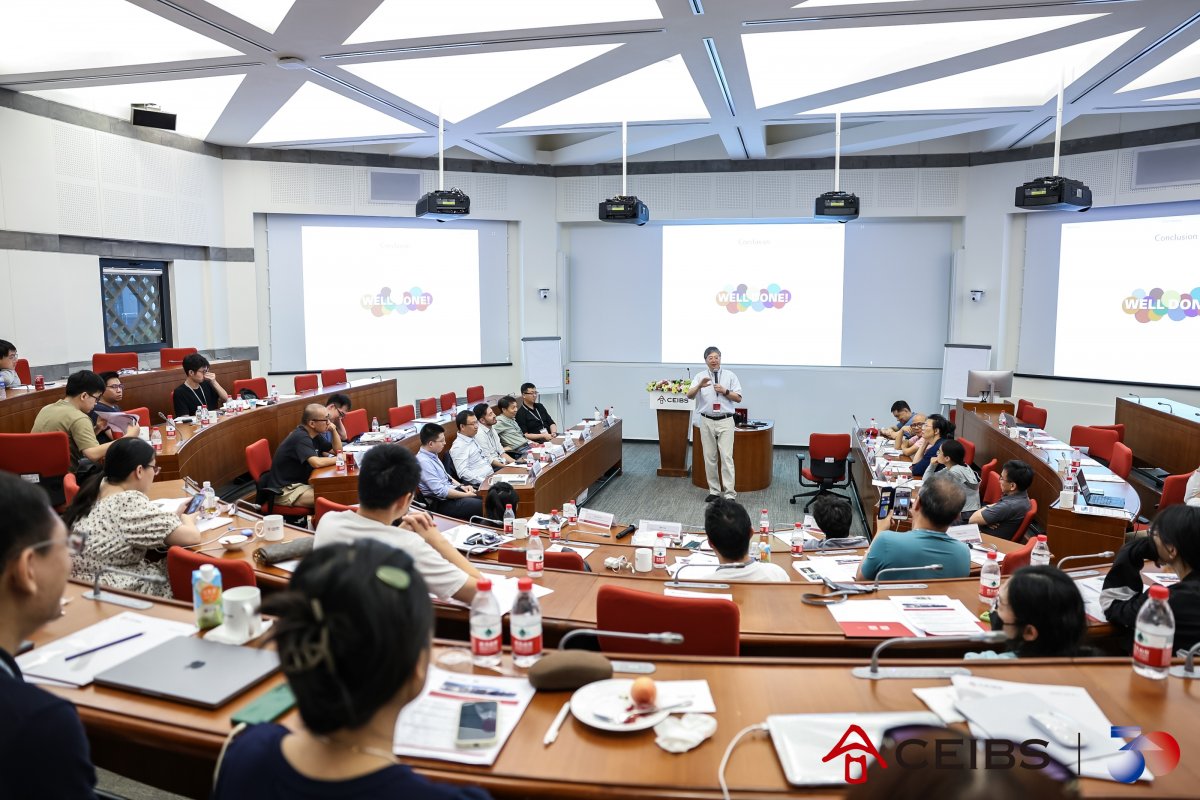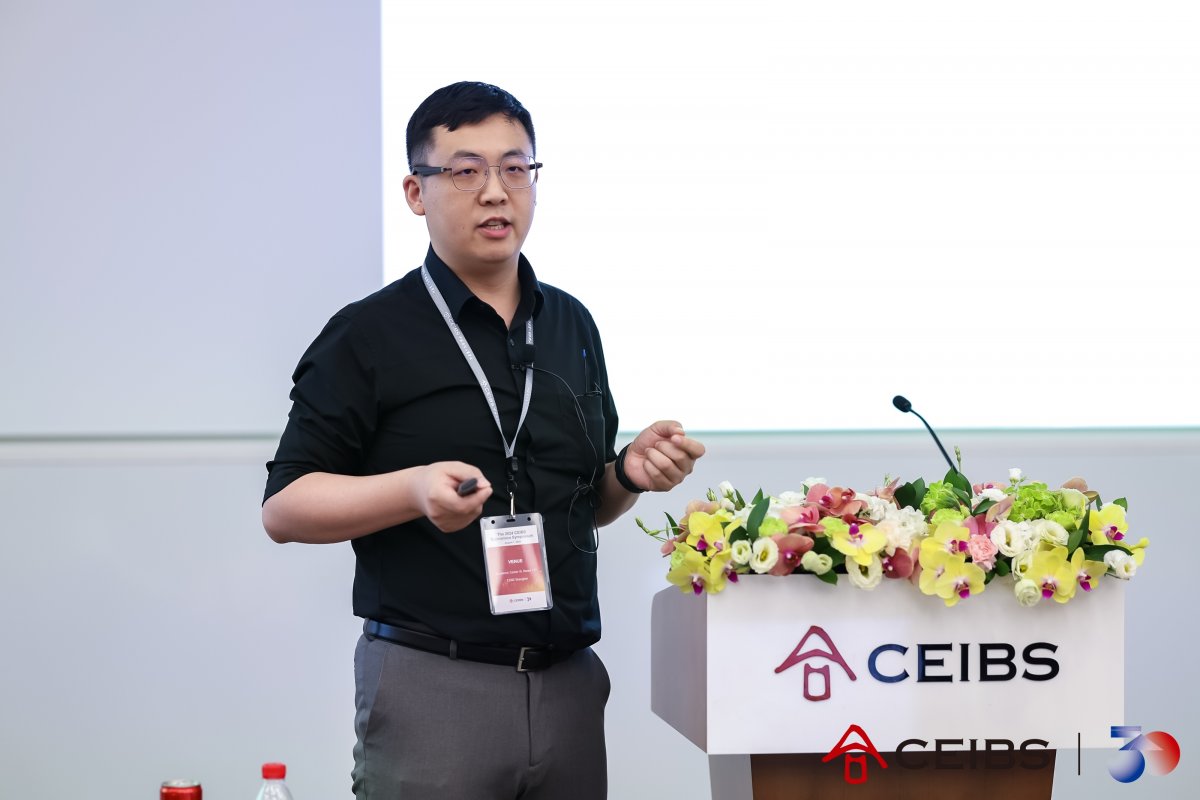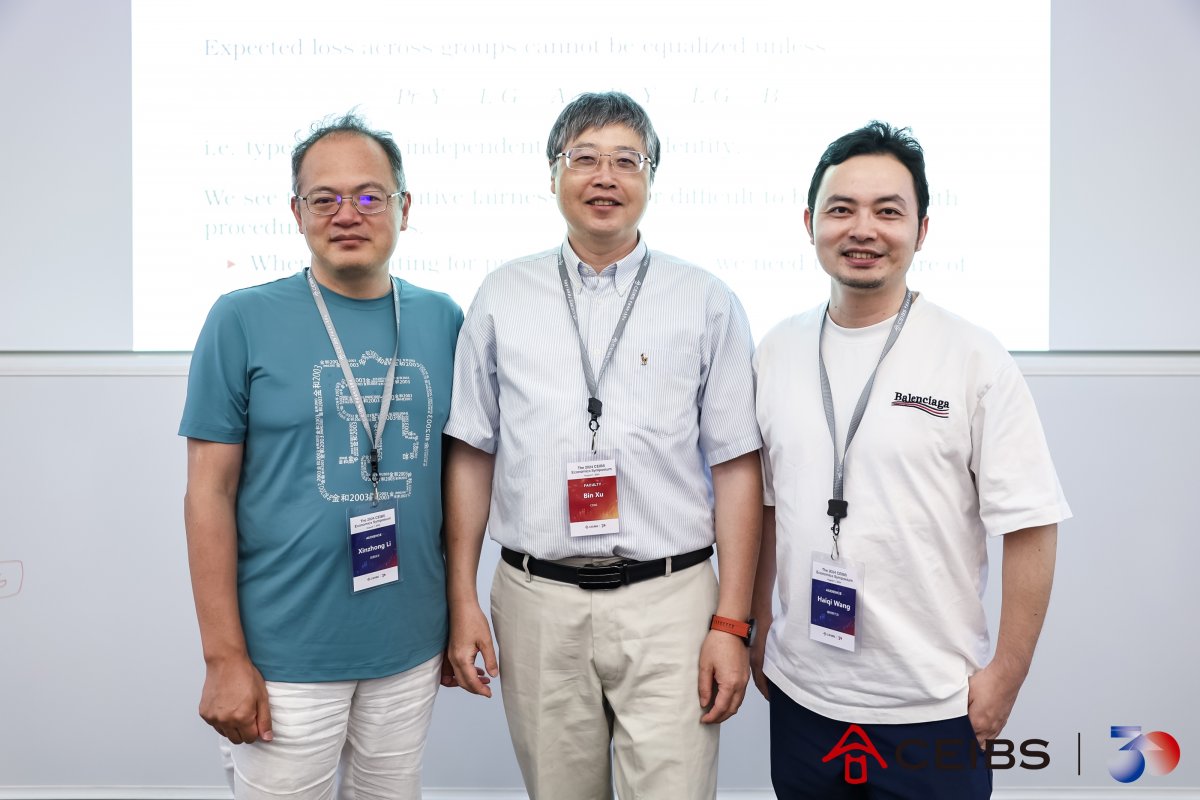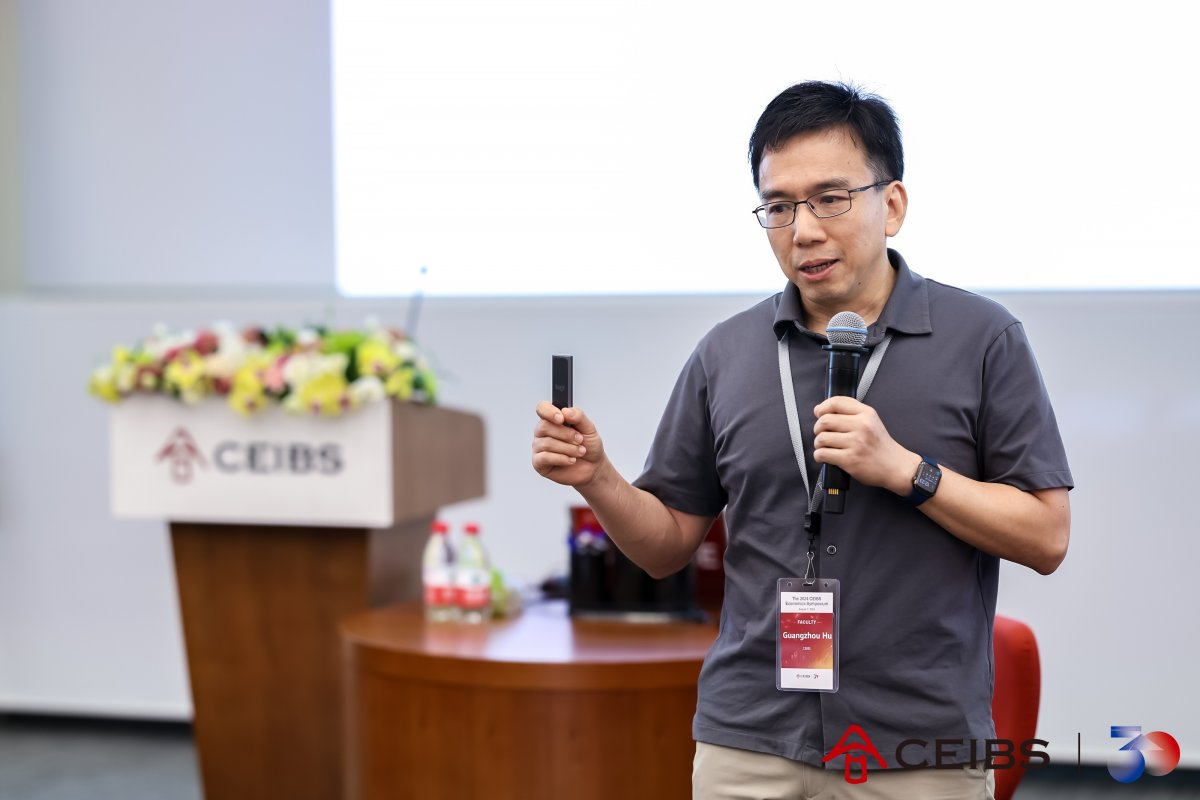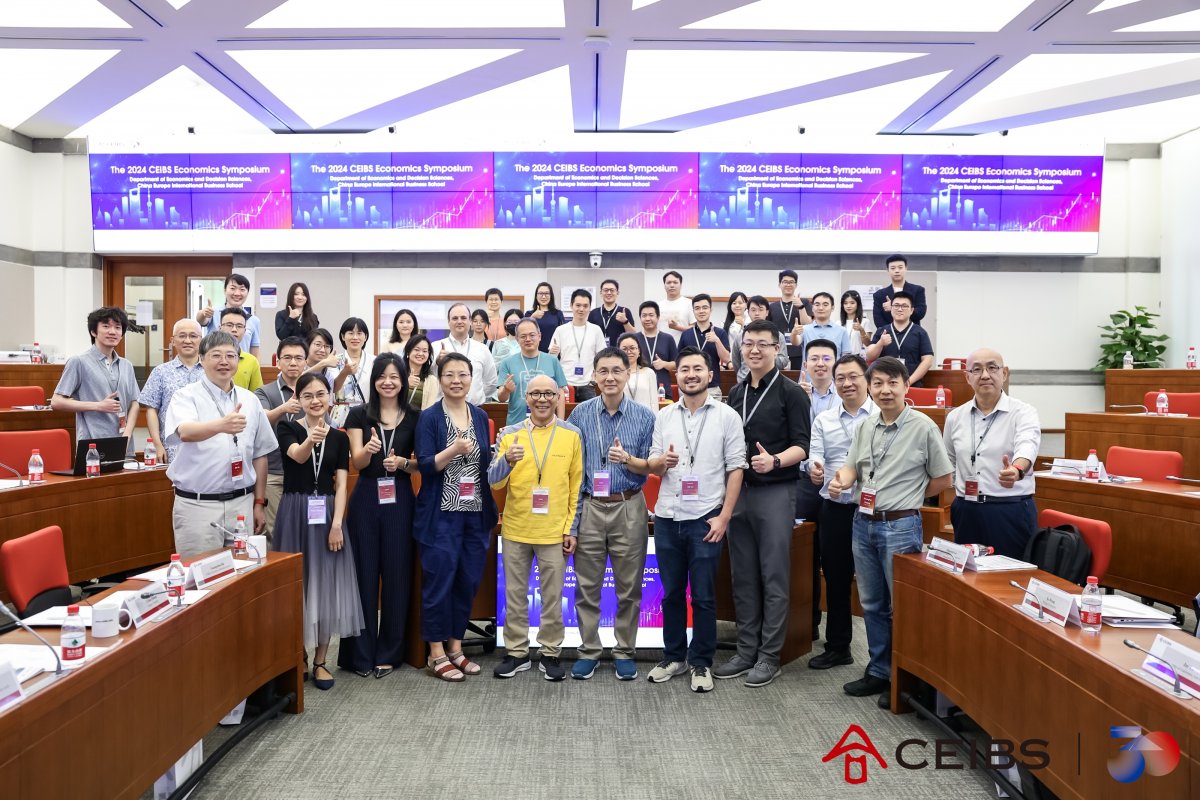CEIBS holds 2024 Economics Symposium
On August 7, 2024China Europe International Business School (CEIBS) held its annual Economics Symposium, at the Academic Center III, Room 117, on the CEIBS Shanghai Campus. The event provided a hub of intellectual exchange, featuring leading economists and scholars presenting their latest research findings and engaging in thought-provoking discussions.
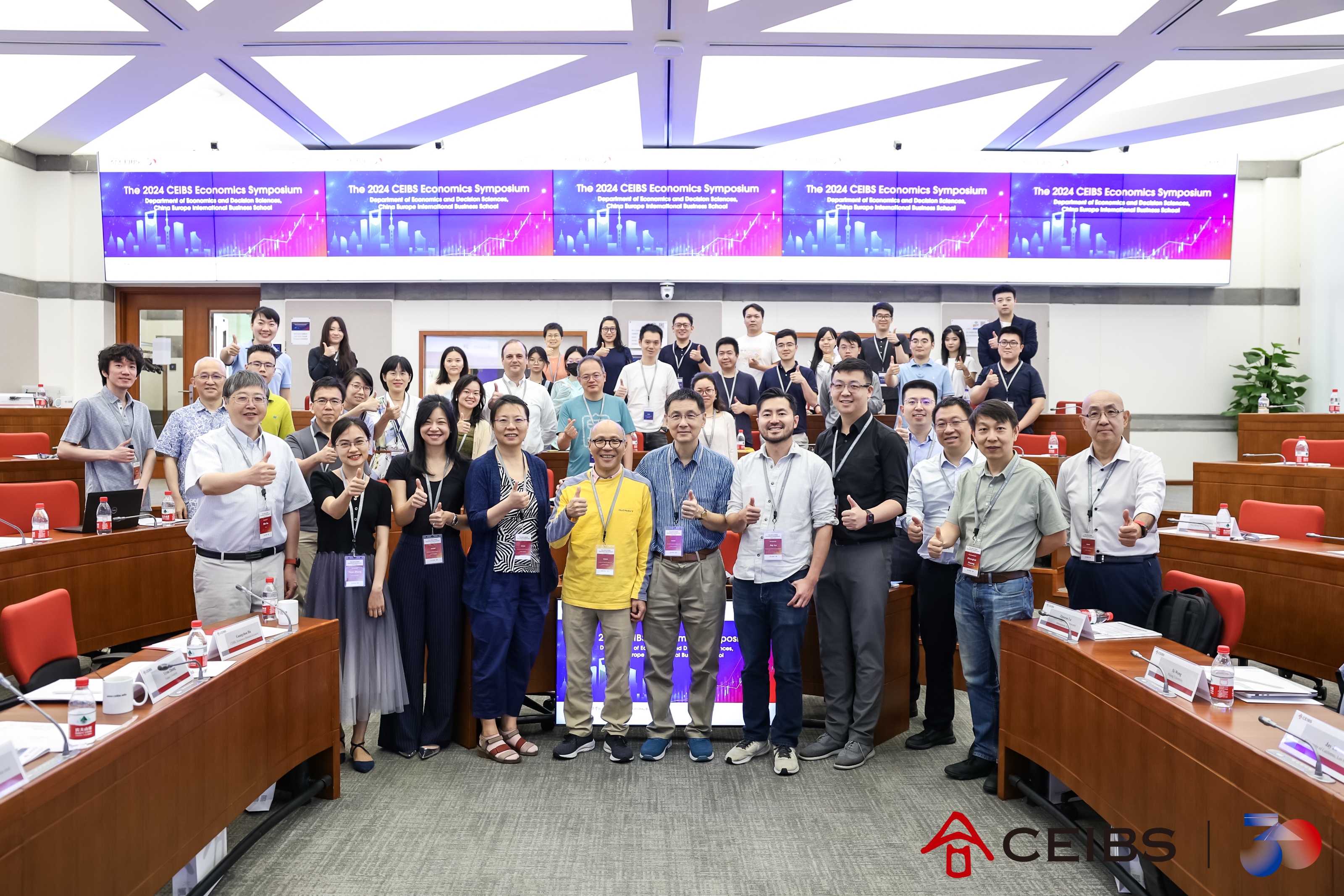
The symposium kicked off with an opening address by Yue Fang, Chair of the Department of Economics and Decision Sciences at CEIBS. The day-long symposium was divided into three sessions; the following are excerpts from speeches given during the symposium:
- Research in Economics: Journal Editors Set the Agenda?
Keynote Speaker: Ivan Png (National University of Singapore)
Discussant: Howei Wu (CEIBS)
In markets with uncertain product quality, certification can resolve information asymmetry. Editors of scientific journals act as gatekeepers, selecting research to publish. Here, we apply unsupervised machine learning to classify the content of the top five economics journals between 1987-2020 into 20 topics. We show that the content varied more with editors' research interests than trends in research, journal missions, or changes in journal policies. The top five journals published 130% more articles on topics related to the editors' own research. The empirical relation might be due to scholars submitting more better such papers (“author clientele”), editors soliciting more such submissions (“editorial activism”), or editors favoring such submissions (“editorial favoritism”). Our analyses rule out author clientele and editorial activism, but provide some support for unconscious editorial favoritism.
- The Effects of Pro-Innovation Policies: A Theory and An Empirical Analysis
Speaker: Edwin Lai (Hong Kong University of Science and Technology)
Discussant: Jie Cai (Shanghai University of Finance and Economics)
We analyse two prevalent types of patent promotion policies (PPP), namely reward and subsidy policies, by constructing a general equilibrium model. We examine the effectiveness of PPP in stimulating R&D and the generation of high-quality and low-quality patents, derive a necessary condition for PPP to be welfare-improving, and derive testable hypotheses. We verified the hypotheses using the difference-in-differences model of Callaway and Sant'Anna (2021), which allows for heterogeneous treatment timing and effects across different treatment groups. We collected patent-level data in 1985-2009 from the China National Intellectual Property Administration and patent promotion policy data from various Chinese provinces. Our analysis indicates that PPP effectively increased R&D and patent creation, though they increase almost indiscriminately both the high-quality and low-quality patents. Based on our theoretical and empirical analyses, we conclude that PPP implemented in China between 1995 and 2008 were potentially welfare-improving.
- The Impact of the Trade War: Divergence in Chinese and U.S. Innovations in the Post-Conflict Era
Speaker: Yiran Zhang (Fudan University)
Discussant: Guangzhou Hu (CEIBS)
This paper investigates the impact of the US-China trade war on China’s innovation activities and the link between new Chinese technology and the US. Employing textual analysis to gauge the resemblance of China’s patents to the recent and past US patents, the paper finds that an increase in the firm-level exposure to US export tariffs results in a decrease in the similarity of China’s patents to US patents, particularly the most recent ones. Innovations from different countries do not adhere to a single quality ladder but are multi-faceted, as evidenced by the fact that China's innovation similarities to other developed countries decline at heterogeneous magnitudes. Furthermore, this paper finds that the export tariff reduces both R&D investment and patent filings in China, while tariffs on imports from the US show no significant influence. We develop a model featuring firm-level export and innovation decisions on multiple products towards countries with heterogeneous preferences to elucidate the mechanism. The model predictions are consistent with the empirical findings, and we provide further evidence to illustrate the impact of innovation activities on firm performance.
- The Effect of House Prices on Fertility: Evidence from House Purchase Restrictions
Speaker: Yu Zhang (Peking University)
Discussant: Zhangkai Huang (Tsinghua University)
We assess the causal effect of house price increases on the great birth rate decline in China from 2016 onward, and on the country's marriage market and private educational investments. Quasi-experimental increases in house prices, driven by the capital spillovers of house purchase restrictions in large cities to nearby unregulated cities, significantly reduced the birth rate in these cities. In the microdata, the individual-level effects were concentrated among rural people who do not own urban homes, especially when rural schools are spatially scarce. Both the marriage and the within-marriage margins contributed to the fertility effects. Private investments in children's education increased after the house price shock. A back-of-the-envelope calculation suggests that the positive house price shock accounted for a non-negligible share of the aggregate birth decline.
- Algorithm Design: A Fairness-Accuracy Frontier
Speaker: Jay Lu (University of California, Los Angeles)
Discussant: Qinggong Wu (The Hong Kong University of Science and Technology)
Algorithm designers increasingly optimise not only for accuracy, but also for fairness across pre-defined groups. We study the trade-off between fairness and accuracy by characterising a fairness-accuracy frontier, which consists of the optimal points across a broad range of preferences over fairness and accuracy. A simple property of the algorithmic inputs, group-balance, qualitatively determines the shape of the frontier. We further study an information-design problem where the designer flexibly regulates the inputs, but the algorithm is chosen by another agent. Excluding informative inputs can be optimal in general, but is strictly suboptimal if the designer has access to group identity.
- Contract Design under Output Manipulation: Theory and Application to China
Presenter: Xi Weng (Peking University)
Discussant: Zhuoran Lu (Antai College of Economics and Management, SJTU)
The manipulation of output performance is well observed in various organisations. This paper provides a novel perspective about why the principal might tolerate the agent's output manipulation. We introduce manipulation as costly falsification ala Perez-Richet and Skreta (2022) and examine optimal contract design within a moral hazard framework. We show that the optimal design allows for a certain degree of manipulation to balance incentivising agents and screening real output. Moreover, manipulation varies non-monotonically with manipulation costs in equilibrium, and a rise in manipulation costs may lead to a higher level of manipulation when doing so can incentivize the agent to exert efforts. We apply and modify our model to the setting of China where GDP data manipulation by local officials had long persisted until very recent years and derive a set of testable predictions. We present empirical evidence to validate these predictions and highlight the practical relevance of our theoretical insights.






